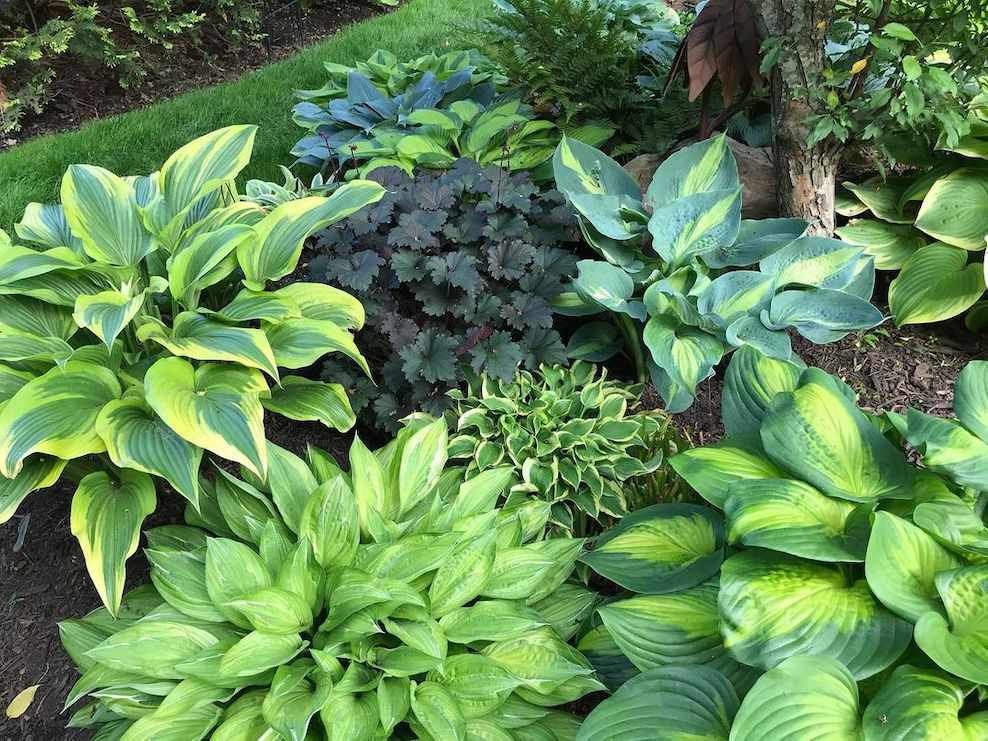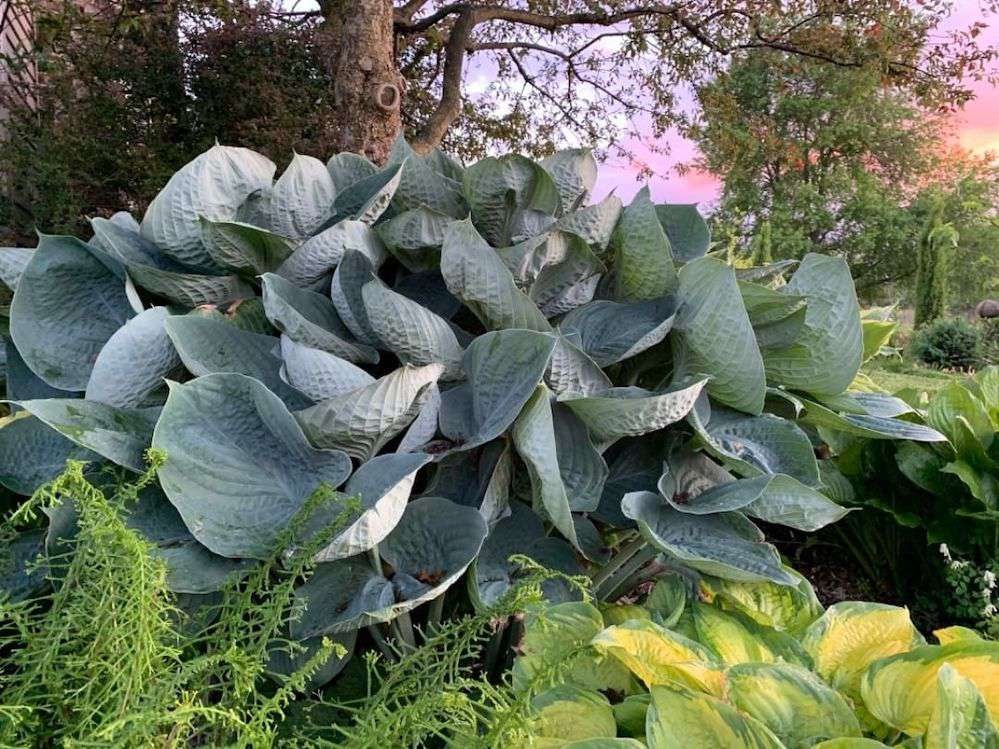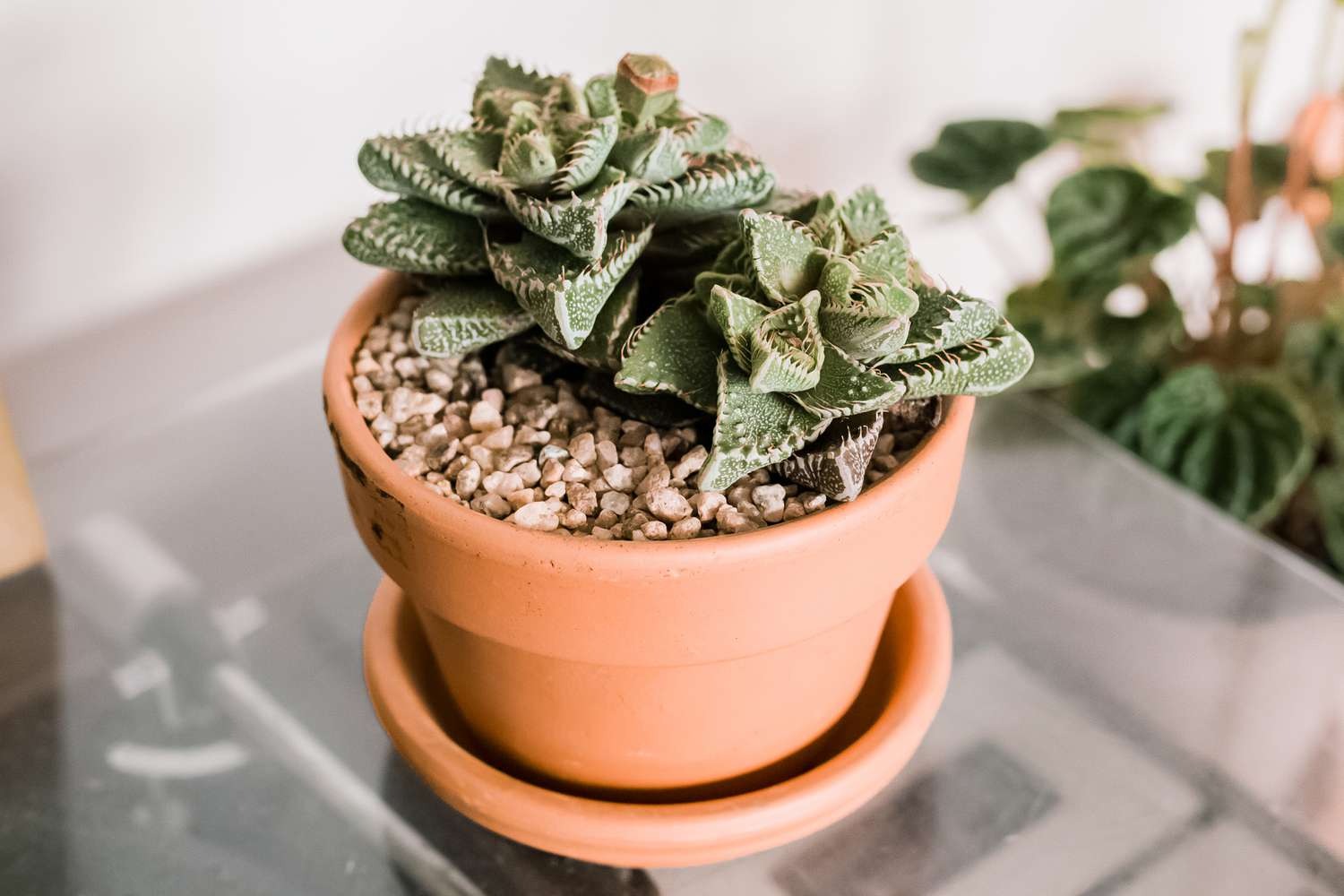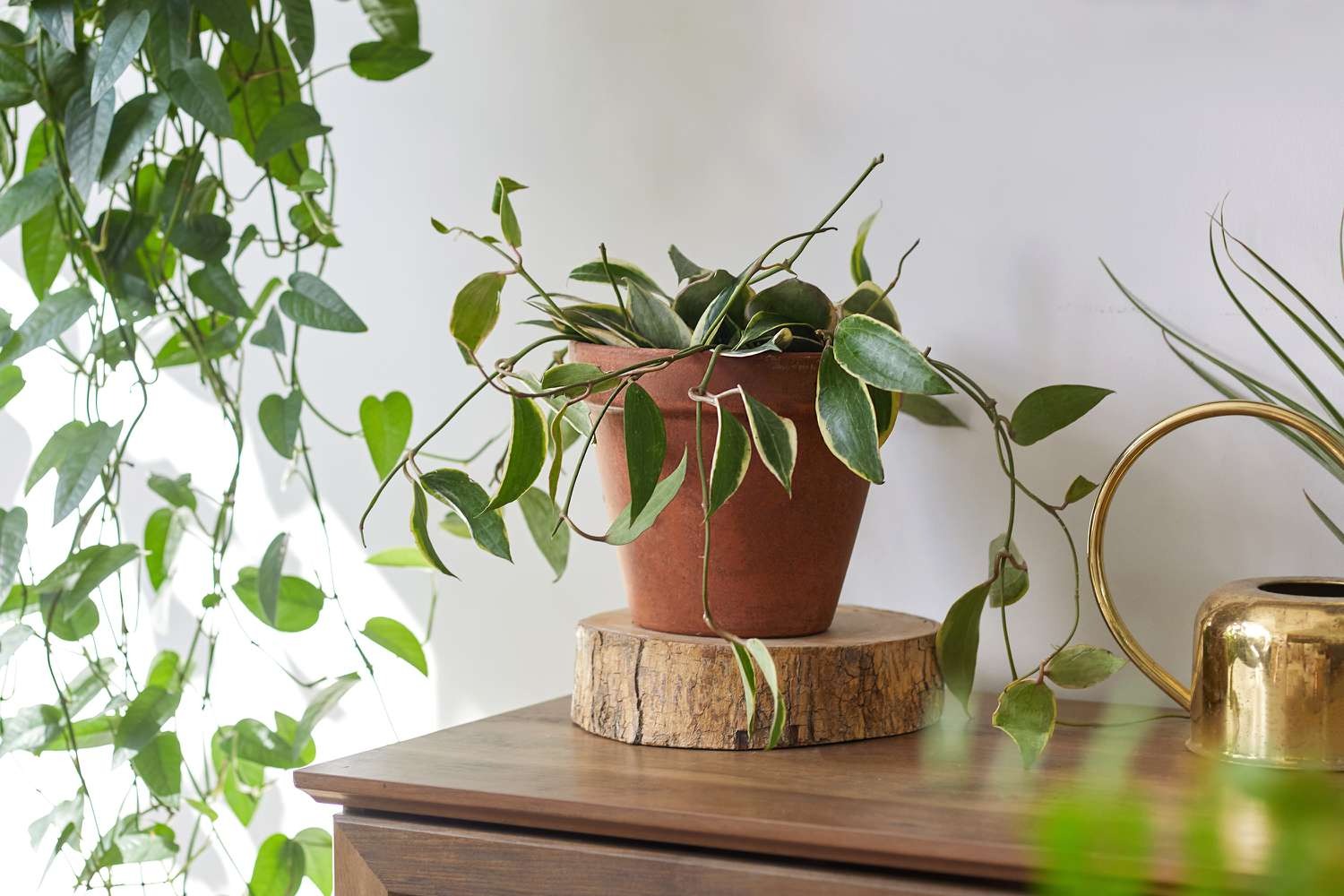Perhaps no garden plant is as easy to grow, prolific, and versatile as the hosta. Available in thousands of varieties, it has an enormous range of sizes, shapes, colors, and textures. It’s one of the most popular choices for shade gardens, although many hosta varieties can tolerate full sun. It’s not surprising that many gardeners have multiple hostas in their landscapes, and the creation of an entire hosta garden is a popular design choice.
There are a few caveats when choosing and growing hostas, however. Alas, if deer like to roam in your garden, they are very likely to eat your hostas before you can enjoy them. Hostas are susceptible to damage from slugs and caterpillars. In unusually hot summers, hostas might suffer from sun or heat damage. Be sure to divide your hostas every 3-4 years to keep them at a manageable size and to keep the root systems healthy; divide in fall just as they’re going dormant.
When designing a shade garden that includes hostas, you’ll want to consider a few of their characteristics when choosing them, including size, shape, texture, color, flowers, and form, as well as companion plants. We’ll cover each of these below, along with suggestions of hosta varieties.

01. Go for Giant Hostas
Some of the most dramatic hostas are very large and can grow up to four feet tall—or taller when you add in the flower stems. You’ll want to allow plenty of room for these giants to grow and show off their majestic presence in your garden.
02. Try Smaller Varieties
There are many diminutive hosta varieties (often called “miniature” hostas) and these can add lovely points of interest to your hosta garden. Be sure to plant them towards the front of your bed or border so they can be seen.
Popular varieties include “Blue Mouse Ears” (pictured), ‘Sun Mouse’, ‘Stiletto’, ‘Little Caesar’, ‘Mini Skirt’, and ‘Tiny Tears’—perfect for a fairy garden.
03. Get a Cohesive Look With Solid Colors
The color range of hosta foliage is truly astounding. Solid colors include light to dark greens, blue, yellow-green, gold, and even white-leafed varieties. Note how the cool blue of this ‘Dancing Dragons’ hosta complements the yellow-green foliage colors in this garden, not to mention its dramatic teardrop-shaped leaves.
Some gold varieties have red stems, including ‘Lipstick Blonde’ and ‘Fire Island.” Hosta flowers also sometimes come in attractive colors: ‘Aphrodite’ has large, fragrant double white flowers.
04. Vary Colors With Variegated Leaves
Hosta variegation allows for nearly infinite color variations in the shade garden; blue leaves edged with gold, light green leave edged with dark green, white leaves with dark green edged and vice versa, and on and on.

Hosta coloration can be affected by sun exposure: some blues and dark greens perform best in full or part shade, and a gold edge might fade to white if it gets too much sun. Pictured here are ‘Cool as a Cucumber’ in front of ‘Frances Williams’ and ‘Wide Brim’ in the rear right (with ‘Jack Frost’ brunnera on right). For large patches of creamy white coloring try ‘Liberty’, ‘Patriot’, or ‘Amazone’.
05. Try a Range of Leaves
Hosta leaves have a wide range of shapes: slender, rounded, lance-shaped, teardrop-shaped, heart-shaped, curly, and more. These shapes can add intriguing visual appeal; such as the large, pale blue heart-shaped leaves of the ‘Prairie Sky.’ The hosta ‘Prairie Sky’ is a dramatic focal point, with its pale blue heart-shaped leaves in this garden border. It mixes well with the shapes and textures of the ferns, perennial geraniums, and alliums nearby.
In a large hosta planting, a mix of leaf shapes adds interesting visual texture. For rippled leaf edges, try ‘Wiggles and Squiggles’ or ‘Neptune.’
06. Vary Silhouettes
The silhouette, or the form of a hosta, refers to how the entire plant is shaped, as opposed to just the leaves. Some hostas scramble close to the ground, some stand tall in a vase shape, and some create a rounded silhouette. Stems can be short or long.
07. Try Different Textures
Hosta leaves have a wide range of textures. Some are smooth and shiny, some have a matte appearance, some have deep grooves, and some have a puckered or corrugated surface. This texture affects the way the hosta reflects sunlight (or moonlight!) or how it glistens after a rain shower. Even hostas that are very similar in color can offer a thrilling design when planted together, as long as plants with different textures are chosen.

The term substance is often used to describe hosta varieties that have a somewhat thicker leaf than others. This thickness can be found in smooth or corrugated leaves and it provides resistance to slugs. Some varieties known for the heavy substance include ‘Neptune’, ‘Sum and Substance’, ‘Whirlwind’, ‘June’, ‘Maui Buttercups’, or ‘Empress Wu’.
08. Add Companion Plants
Companion plants can provide wonderful colors and textures alongside hostas. Shade perennials that combine well with hostas include ferns, dicentra, heuchera, pulmonaria, astilbes, and perennial geraniums. For annuals, try impatiens, dusty miller, and strawberry begonias.
09. Achieve Balanced Design
Once you start planting hostas, it can get quite addictive! Fortunately, gardeners love to share, so your hosta-loving friends may prove to be a good source of division for planting.
As you get more familiar with different varieties and their growing habits, you will become more adept at designing with them. The shade garden above has a wonderfully balanced design with a dynamic color palette (including a purple heuchera for contrast), as well as a mix of shapes, sizes, and a balance of solid to variegated leaves.




